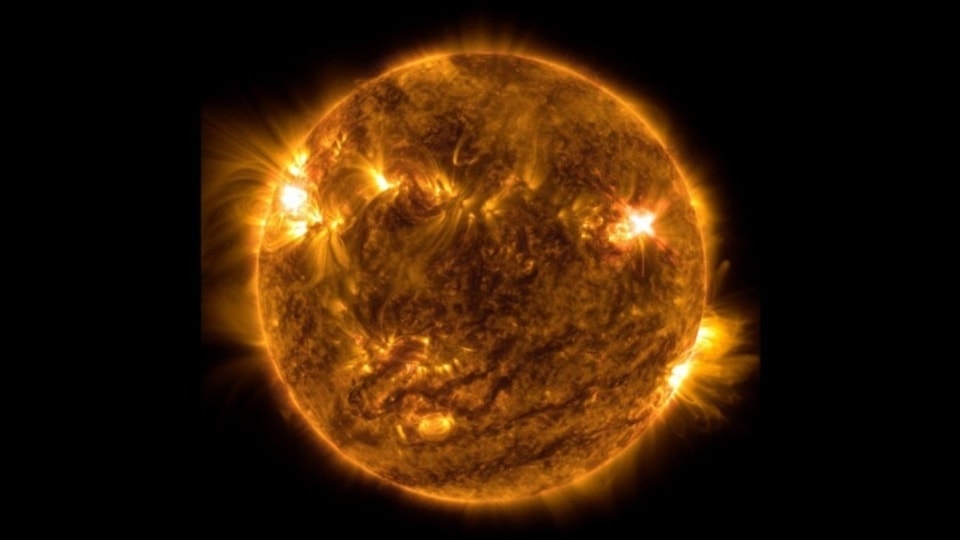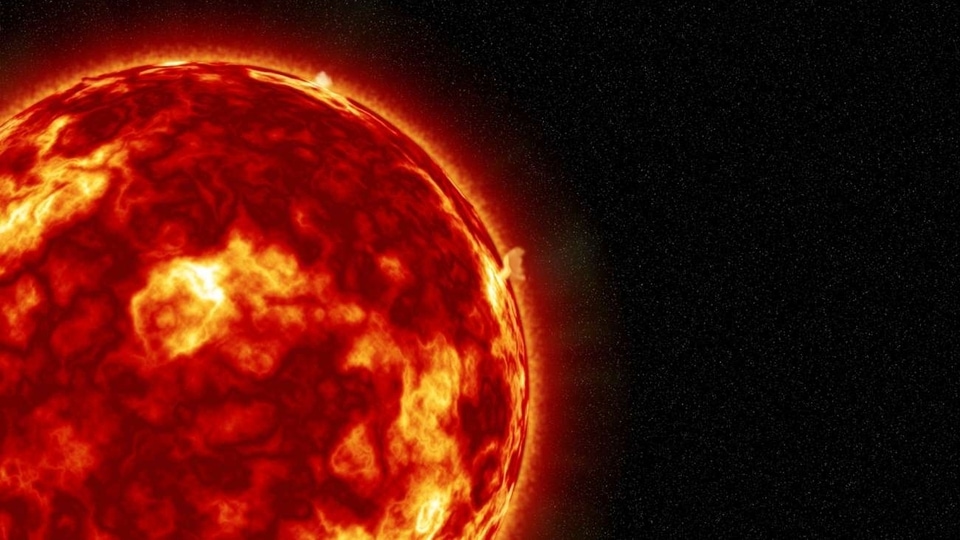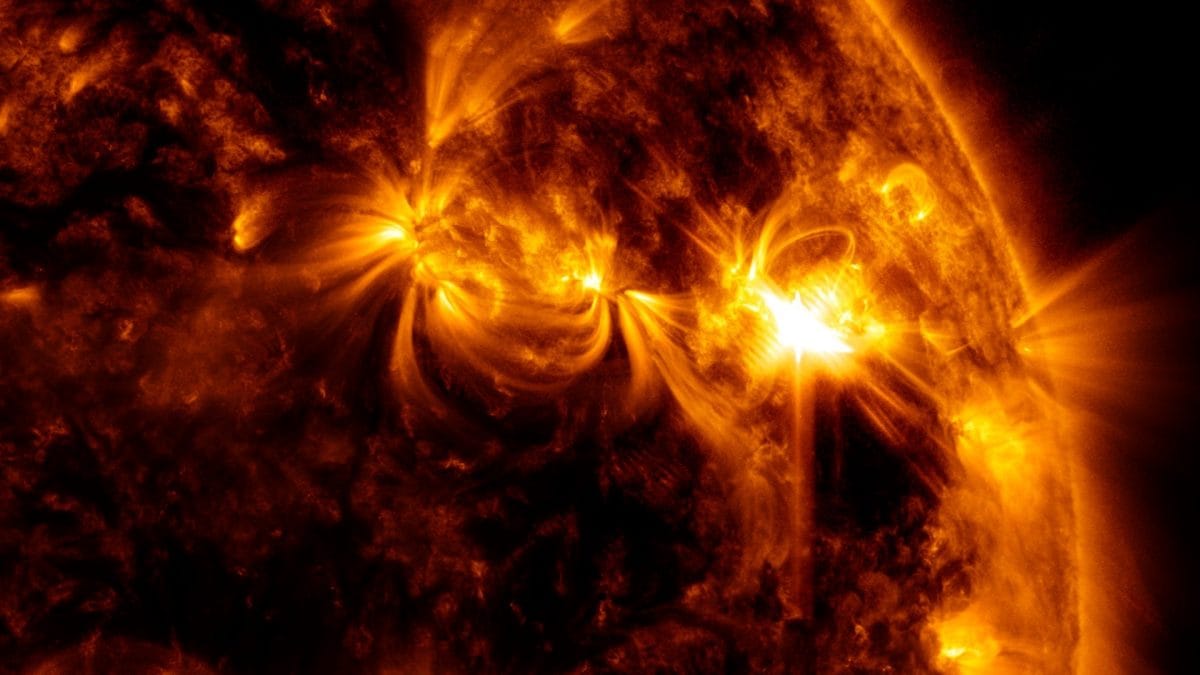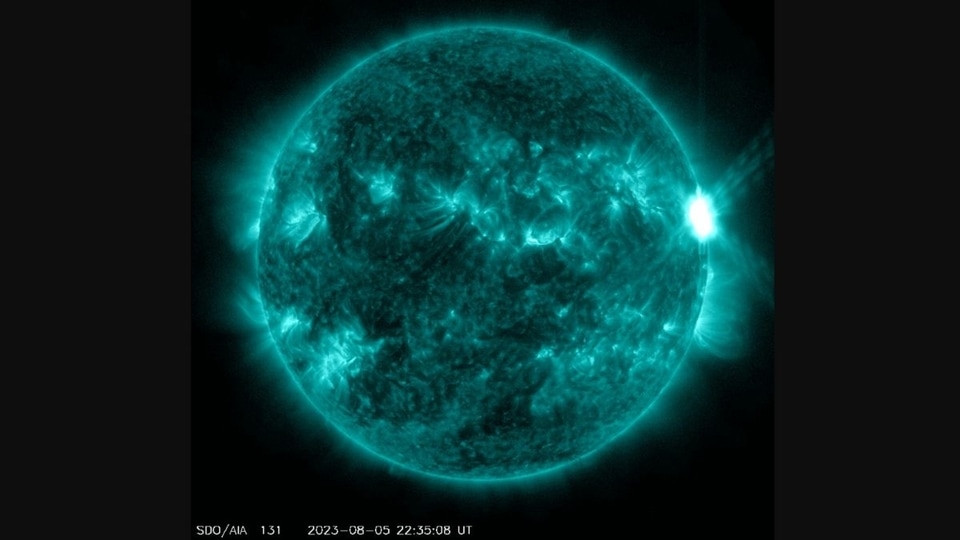Double CME blow could spark G3 geomagnetic storm! Solar flare causes radio blackout over Pacific Ocean
The Sun has turned extremely volatile and two CMEs have been hurled towards Earth which could spark a strong G3 geomagnetic storm soon. Know the details of this solar event.






 View all Images
View all ImagesAs we approach the solar maximum, which is the peak of the Sun's 11-year cycle, solar activity has been steadily increasing. Last month, Earth experienced a 20 nT jolt as a CME prematurely hit the planet. In March, we also experienced the worst solar storm in six years as a G4-class geomagnetic storm hit the planet on March 23, as Earth's "shields were down”. Forecasters have now warned that yet another double event could be on the horizon as two Coronal Mass Ejections (CMEs) have been observed being hurled towards Earth.
Risk of geomagnetic storm
According to a report by spaceweather.com, NASA's Solar Dynamics Observatory (SDO) captured the eruption of sunspot AR3386 on August 5 which produced a dangerous X1.6-class solar flare, along with a CME. Its Solar and Heliospheric Observatory also observed a bright CME escaping from the blast side. Moreover, a magnetic filament also produced another CME that was hurled towards Earth on the same day.
According to NASA, if one of these CMEs hit Earth tomorrow, August 8, it could result in a minor G1-class geomagnetic storm. G1-class geomagnetic storms are considered minor storms, and they generally don't cause a lot of damage. On the other hand, if both these CMEs strike Earth, the double blow could result in a moderate G2 or strong G3-class geomagnetic storm.
Solar flare causes radio blackout
The solar flare hurled out by the active sunspot AR3386 was of X 1.6 intensity. These flares can create radiation storms which have the potential to not only harm the satellites but also give small doses of radiation to the people flying in airplanes at the time! Moreover, these devastating flares can disrupt global communications and bring down the power grids to create blackouts.
A similar event occurred as this solar flare ionized the top of Earth's atmosphere. As a result, mariners and ham radio operators experienced loss of signal at frequencies below 30 MHz over the Pacific Ocean.
Space observatory monitoring the Sun
NASA has a full suite of instruments to measure solar activity that affects Earth. The Solar and Heliospheric Observatory or SOHO is one of the premier instruments that is used by NASA and ESA. Launched in 1995, SOHO is equipped with 12 scientific instruments, such as an Extreme Ultraviolet Imaging Telescope (EIT), Michelson Doppler Imager (MDI), LASCO (Large Angle and Spectrometric Coronagraph), and others. SOHO captures images of the sun's corona, measures the velocity and magnetic fields of the sun's surface, and observes the faint corona around the sun.
Catch all the Latest Tech News, Mobile News, Laptop News, Gaming news, Wearables News , How To News, also keep up with us on Whatsapp channel,Twitter, Facebook, Google News, and Instagram. For our latest videos, subscribe to our YouTube channel.
































